Scholarship Recommendation Letter Template Guide
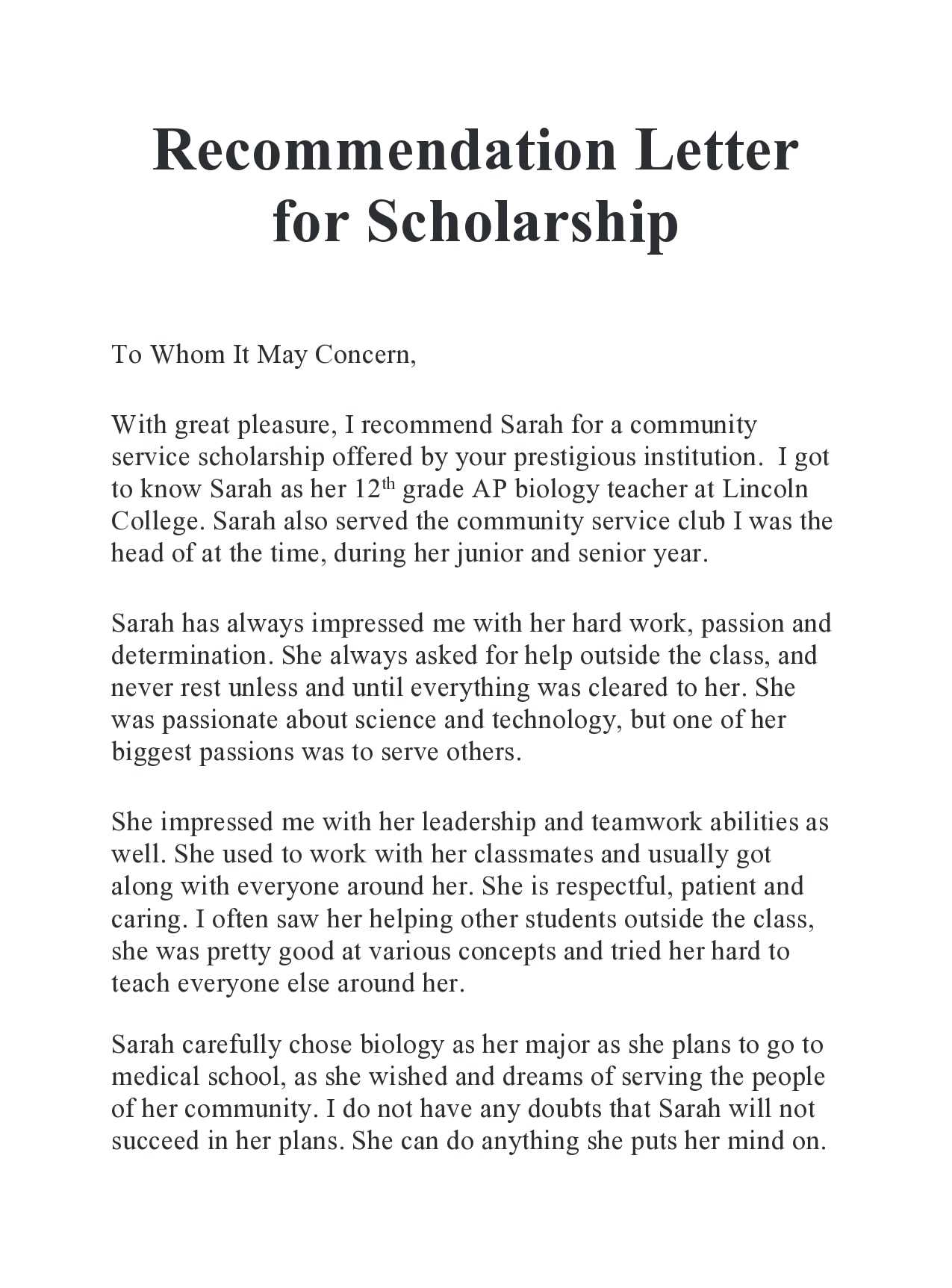
When applying for financial aid or academic programs, a well-crafted support document can significantly impact your chances of success. Such a document provides insight into your character, skills, and achievements, helping decision-makers understand why you are a strong candidate.
Creating an impactful recommendation involves more than just listing qualities. It requires a balance of personal insight and professional acknowledgment to truly highlight the applicant’s potential. A carefully constructed reference can help others see the individual in a favorable light and increase the likelihood of receiving support.
How to Write a Strong Recommendation
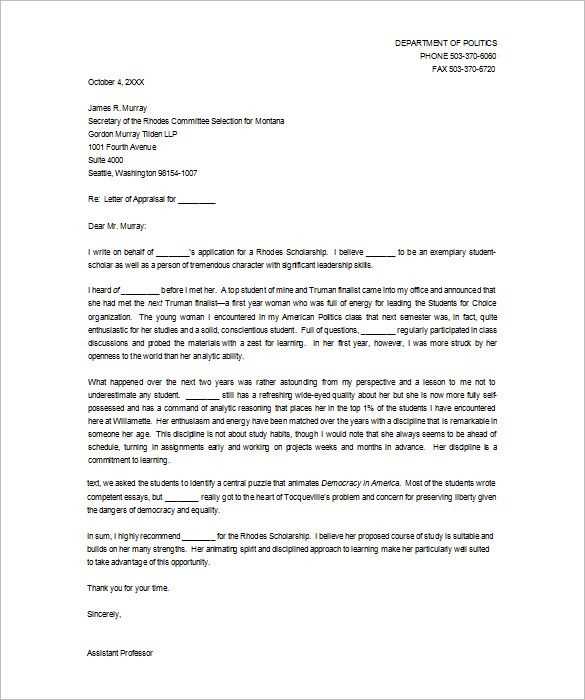
Crafting a compelling support document requires more than just a formal tone. The key to making it impactful is to focus on the individual’s qualities, accomplishments, and the value they bring. A well-rounded and thoughtful piece can make a strong impression on the reviewer and increase the applicant’s chances of success.
Understand the Purpose of the Document
Before beginning, take time to understand the document’s purpose. This will help in shaping the tone and content. Aim to highlight the applicant’s strengths that align with the specific goals or criteria of the opportunity. Demonstrating how they meet or exceed expectations will make the document more effective.
Provide Specific Examples
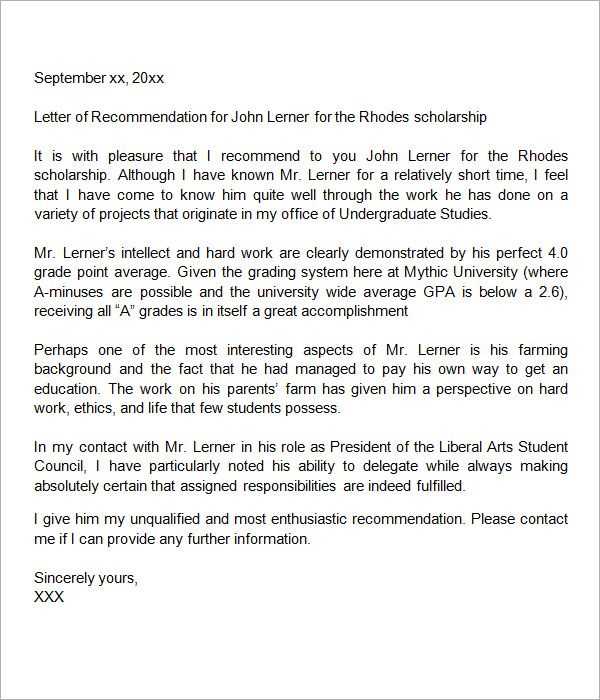
Vague statements won’t make an impact. Instead, use specific examples to illustrate the individual’s achievements and abilities. Whether it’s a personal experience, a professional success, or an academic milestone, concrete instances provide credibility and a deeper understanding of their potential.
Essential Elements of a Scholarship Letter
To effectively support an individual’s application, certain components must be included to ensure the document is both professional and persuasive. A well-structured reference should cover key points that provide a clear understanding of the applicant’s qualifications and suitability.
| Element | Description |
|---|---|
| Introduction | Start by introducing yourself and explaining your relationship with the individual. This helps establish credibility and context for the evaluation. |
| Personal Attributes | Highlight the applicant’s key qualities, such as determination, integrity, and work ethic. Personal traits can make a significant difference in their application. |
| Specific Achievements | Provide examples of accomplishments that directly relate to the opportunity. Focus on notable successes that demonstrate the individual’s potential. |
| Conclusion | Finish with a strong closing statement, reinforcing your support and confidently recommending the candidate for the opportunity. |
Tips for Personalizing Your Recommendation
To make a support document stand out, personalization is key. The more tailored the content is to the individual, the more effective it will be. A personalized note not only highlights the applicant’s strengths but also shows a deeper understanding of their character and abilities.
Highlight Unique Qualities
Focus on what makes the applicant different from others. Whether it’s a unique skill, an exceptional accomplishment, or a personal story, showing what sets them apart can be very compelling. Avoid generic statements and ensure each point is specific to the individual.
Connect to the Specific Opportunity
Make sure to tie the applicant’s attributes directly to the goals or criteria of the opportunity. This alignment demonstrates that the candidate is a perfect fit and adds relevance to the content. Tailoring your message to the specific situation adds weight to your recommendation.
Common Mistakes to Avoid in Letters
While writing a support document, certain errors can weaken the overall impact and message. By being aware of common pitfalls, you can ensure that your submission is both professional and effective, helping the applicant stand out positively.
- Being too Vague: General statements like “They are a good person” do not provide enough insight. Be specific about qualities and examples.
- Over-exaggeration: Avoid inflating the applicant’s abilities. Be truthful and provide examples to back up your claims.
- Failing to Customize: A generic document won’t have the same effect as one tailored to the individual and the opportunity. Always make it relevant.
- Using Unprofessional Language: Maintain a formal and respectful tone throughout. Slang and informal language can diminish the credibility of your support.
Formatting a Scholarship Recommendation Letter
The structure and layout of your support document are just as important as the content itself. A well-organized and easy-to-read format ensures that the recipient can quickly grasp the key points and understand why the applicant is a strong candidate. Proper formatting not only improves readability but also demonstrates professionalism.
Key Formatting Guidelines
- Clear Structure: Begin with a formal introduction, followed by a discussion of the applicant’s strengths, and end with a strong conclusion.
- Paragraphs: Use short, focused paragraphs for clarity. Each paragraph should address a specific point to maintain flow.
- Consistent Font and Spacing: Stick to a professional font like Times New Roman or Arial, and use 1.5 or double spacing to improve readability.
- Correct Length: Aim for a concise document, ideally one to two pages. Keep it focused and avoid unnecessary details.
Final Touches
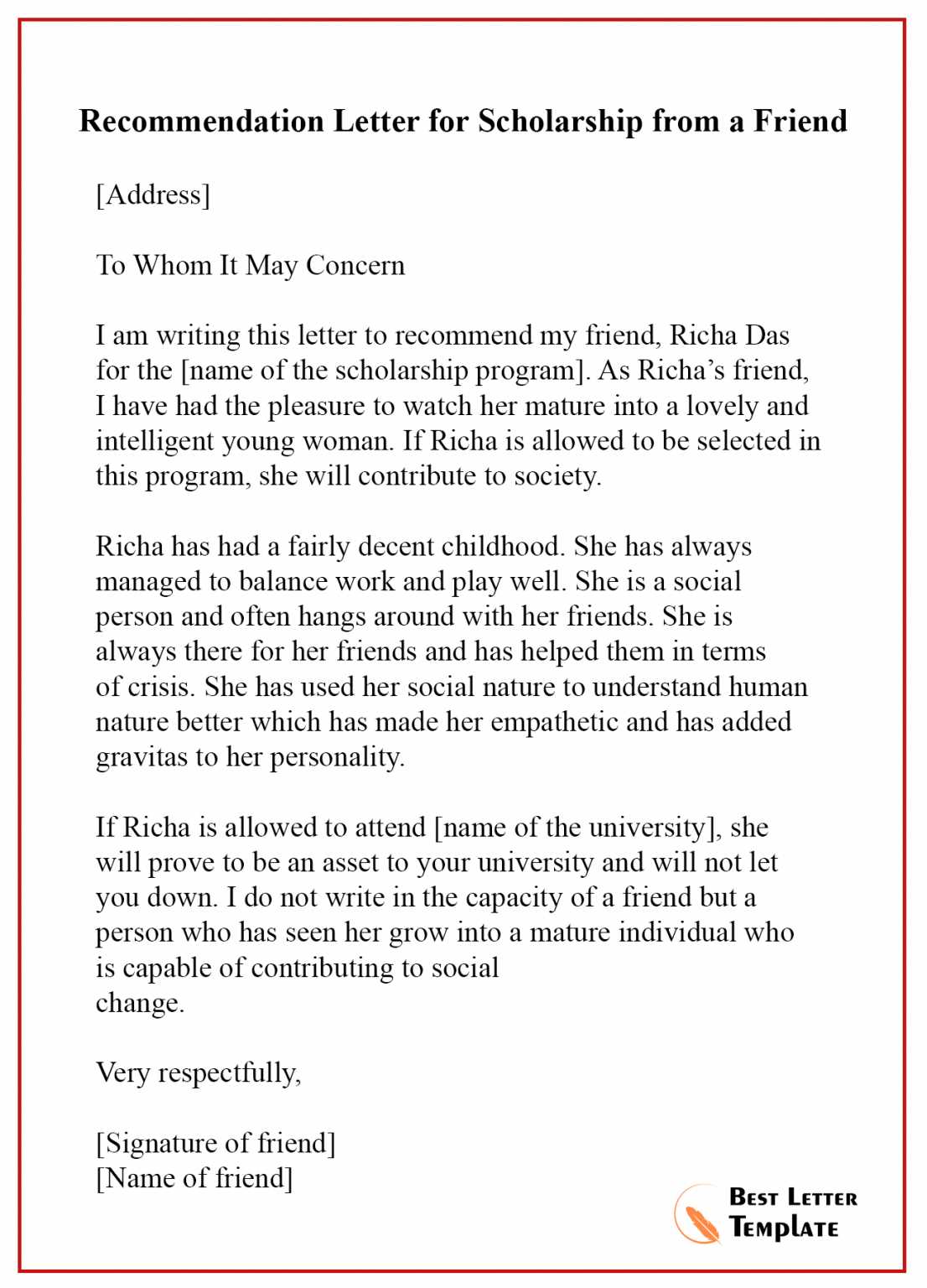
- Proper Sign-off: Use a formal closing such as “Sincerely” or “Best Regards,” followed by your full name and position.
- Proofread: Always proofread for spelling and grammar errors before submitting. A polished document reflects positively on both you and the applicant.
How to Address the Recipient Properly
Addressing the recipient of your support document correctly is crucial in establishing a tone of professionalism and respect. Using the appropriate salutation and formality helps ensure that your message is well-received and that the applicant is presented in the best possible light.
Choosing the Right Salutation
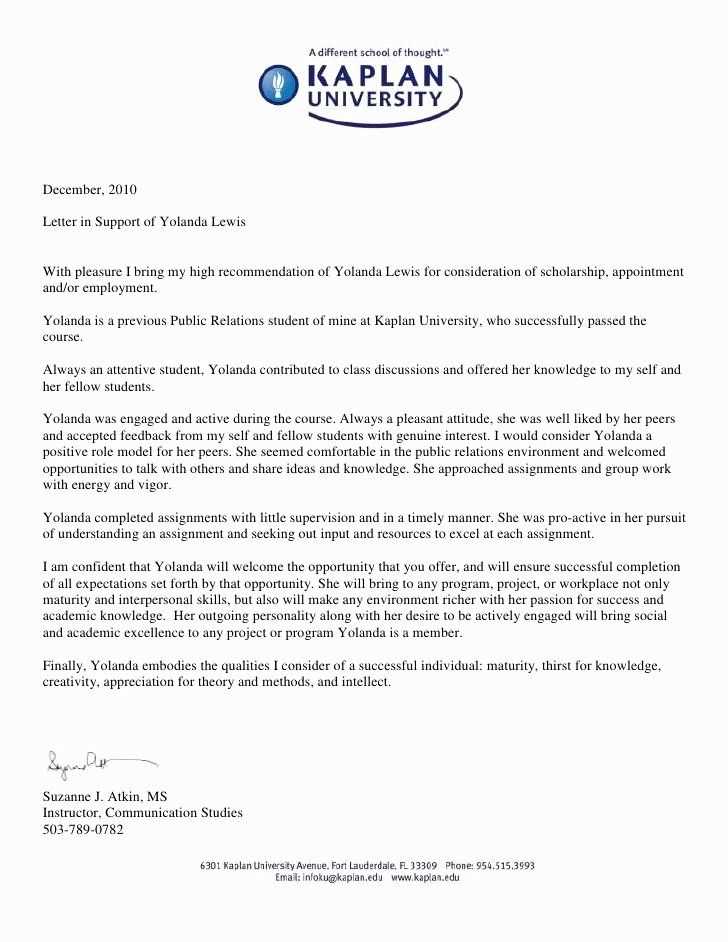
The salutation should reflect the level of formality required for the situation. Here are some common options:
- Dear [Title] [Last Name]: This is the most formal and professional option, typically used when addressing someone whose title and last name are known.
- Dear Admissions Committee: If you do not know the specific person reading the document, this salutation addresses the group in charge of reviewing the application.
- To Whom It May Concern: This is a more general salutation and should be used when you are uncertain about the recipient’s identity, but it is less preferred than the others.
Maintain Professional Tone
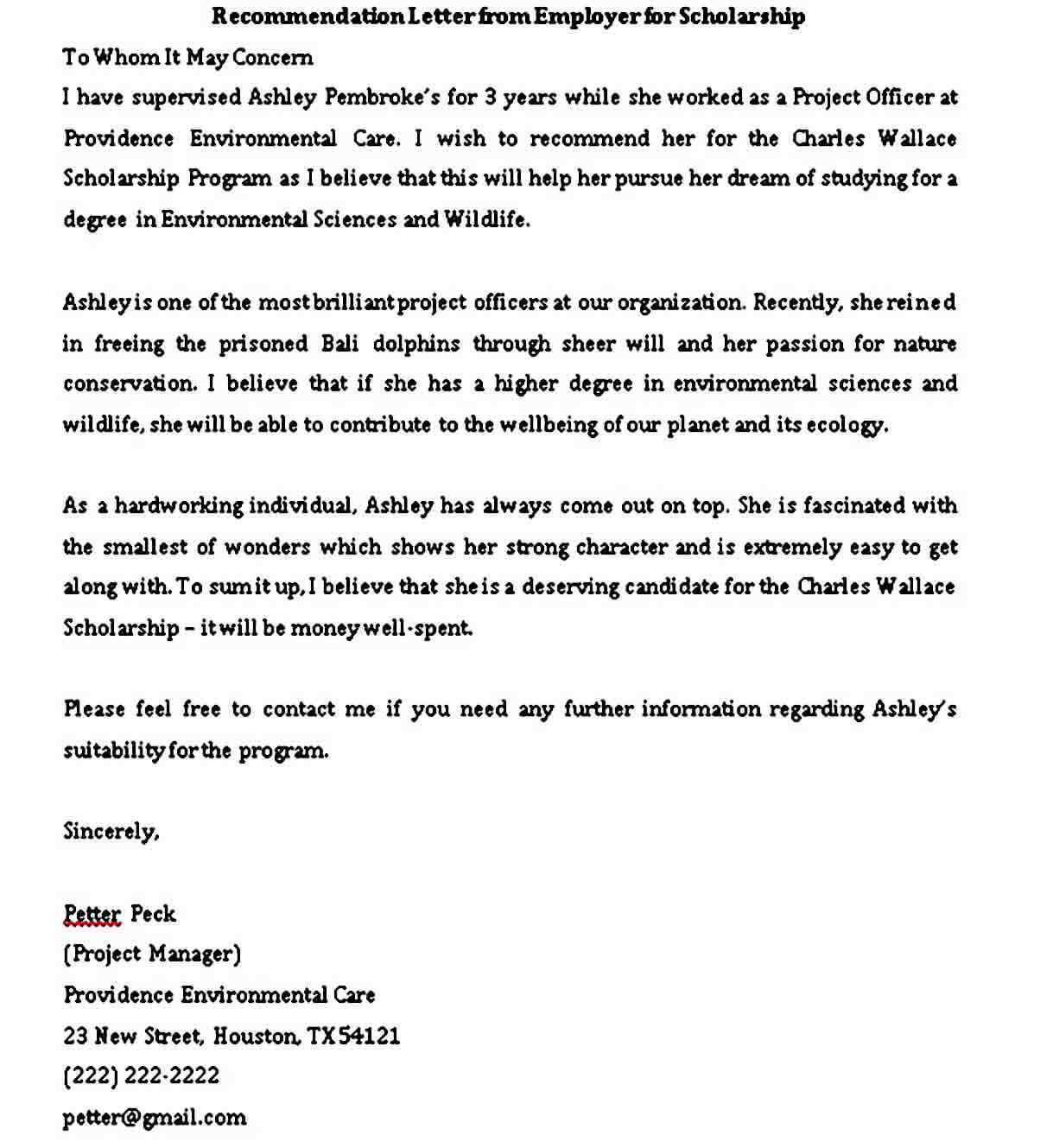
Regardless of the salutation, it is important to maintain a respectful and formal tone throughout the document. Avoid casual language and ensure that your message remains polite and considerate. This reflects both on the applicant and your professionalism.